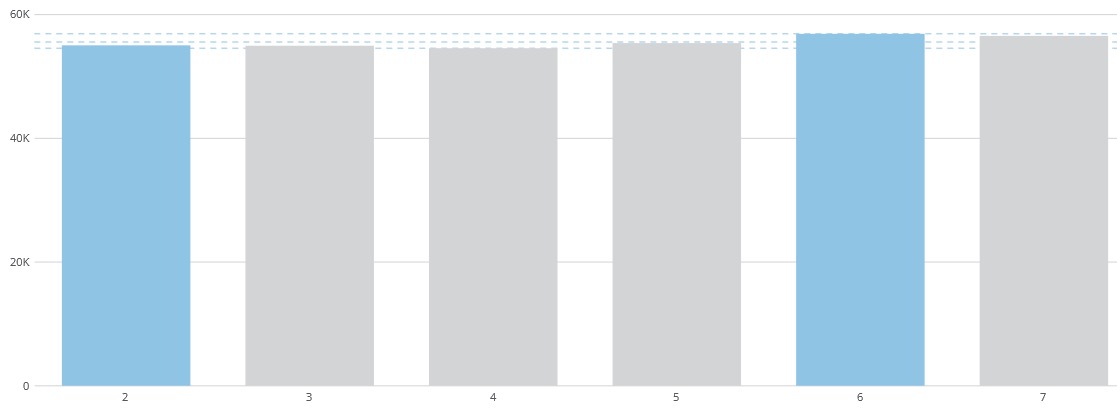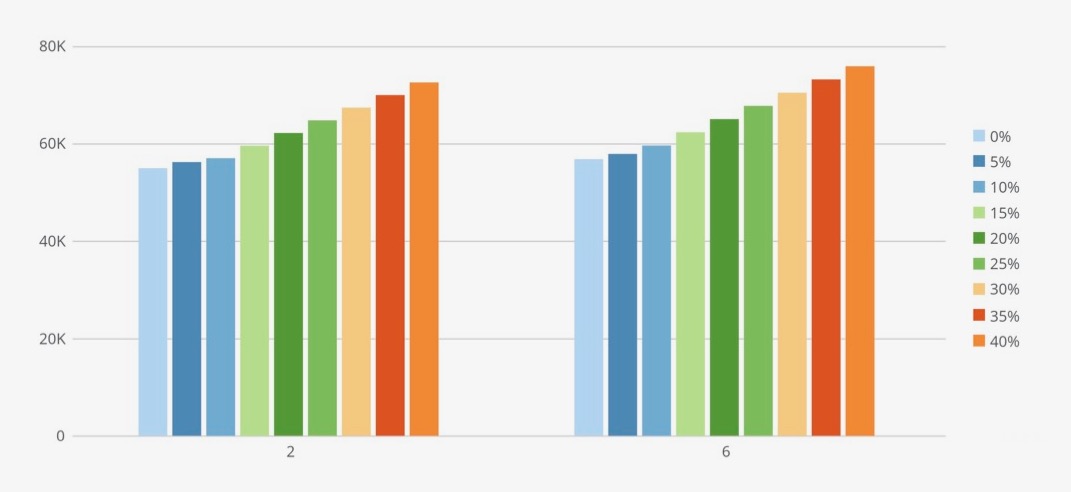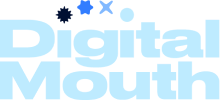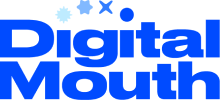How Data Science Helps You Attract More Clients
By Michael Vucovich, Lead Data Scientist
When we ask our agency partners what they need most to improve business and marketing campaign performance for their clients, we often hear responses like “tools that’ll help us make better, more informed decisions.”
These are decisions and answers to questions like “If I cut my digital advertising budget by 20% or 50%, how will that affect my lead flow or profit,” and “which of my customer segments will deliver the highest revenue growth?”
Of course, the tools that can provide deeper customer insights through complex information analysis come from custom-tailored predictive analytical tools, a specialty of Digital Mouth’s data science team. Thanks to the democratization of artificial intelligence and the proliferation of affordable cloud-based software, these powerful tools are now within easy reach of smaller and smaller companies.
Through data science, marketing agencies can now answer client questions like what should my budget be for next year? How much should I spend to achieve a specific business goal? And where should I spend that money?
“Information is the oil of the 21st century, and analytics is the combustion engine.”
— Gartner
Moreover, thanks to increasing volumes of customer data, it’s becoming easier to answer questions like these. A recent study found that 1.7 megabytes of data are generated every second for every person on earth! (1) Customer data reveals demographic details, like preferences, habits, and aspirations, which helps companies micro-target customer segments.
As Gartner’s Peter Sondergaard said, “Information is the oil of the 21st century, and analytics is the combustion engine.” Yes, the rise of predictive analytics holds the most promise for agencies and companies, especially in an environment of shrinking budgets. According to Gartner, marketing budgets dropped to 6.4% of company revenue, down from 11% in 2021.
What is predictive analytics?
Tech Target defines predictive analytics as advanced analytics using statistical techniques, machine learning and other tools to help companies make the most of their marketing dollars. (2)
As Search Engine Journal says, these predictive analytics tools can help inform ad targeting and media buying strategies. You can identify new potential customers and target them with relevant advertising content on the right platforms at the right time. (3) Further, predictive analytics help marketers make sense of data from multiple sources.
At the same time, however, any analysis is solely based on the integrity of your data. Your conclusions can’t be trusted if the data is unreliable, incomplete or tainted.
Predict Conversions and Revenue Based on Budgets, Historical Data
We’ve developed a powerful predictive analytics tool we call a Media Scenario Tester. The tool uses proprietary algorithms and artificial intelligence to quickly test and evaluate multiple media scenarios and budget levels to arrive at the best options for your clients.
We start by uploading your existing media performance metrics, then apply 20–40 data science models. The results yield a range of scenarios that will inform your media tactics and strategy by optimizing budgets against goals such as conversions, revenue, profit, margin, and others.
Thanks to the power of data insights, teams can answer questions such as:
- What’s the optimum media budget for any campaign, and how should I allocate my budget?
- What’s the optimum media budget allocation across channels, geographies, creatives and audience segments?
- What are the estimated business results at various spending levels?
- What budget is needed to hit a specific business goal/quota?
- How are sales/business impacted by a budget increase or decrease?
Case Study: The Media Scenario Tester in Action
One of our agency customers wanted to run a scenario test for a client to determine where the company should spend its media budget to boost conversions significantly. When analyzing their client’s strategic plan and the company’s website traffic, the agency speculated it would be more cost-effective if the client shifted its budget from a demographic-based audience to a retargeting audience.
Our agency client wanted answers to four central questions:
- Can our client expect a bump in conversions by shifting its budget?
- Can the change be applied to display and paid social channels? Should the client apply the shift to both channels?
- What should the optimum re-allocation be with the current available budget?
- How might the new strategy respond to budget changes?
To help the agency answer these questions we built a series of predictive models that calculated budget allocations by audience as independent variables. Following this step, several “run models” ultimately identified the best-performing model, or what is called the “champion” in the data science world. In this case, the random forest model turned out to be the “champion model,” which we loaded into the scenario tester [Figure 1].
Random forest is a machine learning algorithm that combines the output of multiple decision trees to reach a single result. The algorithm is trademarked by Leo Breiman and Adele Cutler. (4)

Figure 1. Digital Mouth tested several predictive models to determine the best-performing model—called the “champion.” In this case, the winner was the random forest algorithm.
Using the random forest algorithm, campaign managers loaded several scenarios into the tester [Figure 2]. In this case, scenarios attributed different allocations of the total budget for each campaign component: paid search (unchanged), display retargeting, display non-retargeting, paid social retargeting, and paid social non-retargeting.

Figure 2. Campaign managers loaded several scenarios into the tester using the random forest algorithm. Scenarios ranged from “light increased, paid social retargeting” to “heavily increased display retargeting.”
In the bar chart below, scenario six will result in the highest number of conversions compared to the other five options [Figure 3].

Figure 3. The media scenario tester showed that scenario six would result in the highest number of conversions when compared to the other five options.
After selecting the potential champion scenario (random forest and scenario 6), the two are compared against different increases in the overall budget. Moreover, these models aren’t linear. A budget increase or decrease may impact performance in surprising ways.
Alternatively, your client may not want to change course if they can hit the same performance goals by increasing the budget amid the current scenario. Furthermore, if you expect a large budget shift in the future, look more deeply at the data, and consider using more complex modeling.

Figure 4. Predicted conversions by different scenarios and models (Random forest).
In this case, we could shift more of the budget to retargeting as we do for display, but the result is a net decrease in conversions (see Figure 4, row 3, under total conversion count).
However, on the display channel, a moderate shift from 45% to 75% of the display budget to retargeting produced a noticeable increase in predicted conversions — a net increase of 1,700 conversions [Figure 4].
When comparing predictions at various budget levels, we concluded the predictions will hold over time regardless of global budget increases. However, if the client maintains budget allocations across channels and audiences, they could also expect performance improvements when increasing budgets by 5% – 10%.
“Every Company is a Software Company.”
Microsoft CEO Satya Nadella once said, “Every company is a software company. That truism is particularly apt for businesses selling to businesses. Moreover, with the rise of digital marketing within our industry, technology and software is crucial. But equally important is data science, which turbocharges software tools with specialized programming, advanced analytics, artificial intelligence, and machine learning.
After all, “Information is the oil of the 21st century, and analytics is the combustion engine.”
References
- Cote, Catherine. “What is Data Science? 5 Applications in Business.” Harvard Business School, January 14, 2021.
- Pratt, Mary. “Predictive Analytics in Marketing: Achieving Success.” TechTarget, December 17, 2021
- Chandrasekar, Chaitanya. “What is Predictive Advertising & Why Do You Need it?” Search Engine Journal, April 11, 2018.
- “What is Random Forest.” IBM Cloud Education, December 7, 2020
Meet Digital Mouth
Want to learn more about how Digital Mouth’s Data Science Capabilities can help grow your agency? Let’s talk.
Contact Us
